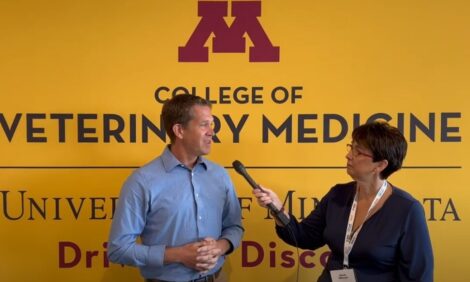



Livestock show preparation: The importance of a Certificate of Veterinary Inspection
US shows often require a health certificateSpring is just around the corner and with it comes one of the busiest times of year for many livestock owners — show season. In preparation, exhibitors need to know the importance of a Certificate of Veterinary Inspection (CVI), more commonly known as a health certificate. Any time an animal moves into another state, a CVI is required. When it comes to livestock shows, many will require a CVI even if the animal doesn’t have to cross state lines to get to the show.
“Many animals will go to multiple shows in the spring and we want to make sure those animals are prepared before they go,” said Dr. Rosslyn Biggs, director of continuing education and beef cattle extension specialist at the Oklahoma State University College of Veterinary Medicine.
“We prepare by discussing preventatives, such as vaccines, with our veterinarians and making sure they are inspected by our veterinarians and have a CVI for those shows that require it.”
Why is a CVI important?
The requirement to obtain a CVI before going to a show may seem like an unnecessary hassle, but it’s critical for many reasons said Dr. John Gilliam, clinical professor of food animal production medicine and field service at the OSU CVM.
“When animals from different farms co-mingle at a show, there is always some risk of disease exposure," Gilliam said. "The purpose of a CVI is to make sure animals traveling to a show or crossing state lines are healthy and present minimal risk of transmitting a disease to other animals.”
Exposure to disease could lead to the animal becoming sick itself or taking the disease back home and exposing animals there. In some cases, this could lead to severe outbreaks of disease that cause significant animal and financial loss. While the risk cannot be eliminated, if every animal arrives with a current CVI, it can be greatly reduced.
Who can write a CVI?
A CVI can only be written by an accredited veterinarian. Most veterinarians who practice large animal or mixed animal medicine are accredited and can write a CVI.
What is required for a CVI?
All CVIs have two basic requirements: a visual inspection of the animal must be performed and the animal must have identification.
The visual inspection of the animal must be done by an accredited veterinarian within 10 days of the expected date of travel. To legally write a CVI, the veterinarian must physically see the animals in person. The animals may be taken to the veterinary clinic or the veterinarian may come to the farm.
“For a veterinarian to write a CVI, the animal must appear healthy,” Gilliam said. “If any signs of a potentially infectious or contagious disease are present, the CVI cannot be legally written. This applies for any infectious disease, even something as seemingly insignificant as ringworm.”
Animals must also have some form of identification. If an animal will be traveling to another state, even just to attend a show, official identification is required. Official identification consists of a unique ID that applies only to the individual animal. This type of ID is intended to facilitate tracing of the animal in the event of a disease outbreak. The ability to trace where an animal has been greatly improves the ability to contain and control a potential disease outbreak.
In Oklahoma, the types of official ID accepted include approved ear tags specific to the species being identified.
“Traditionally, metal tags with a unique number have been used,” Gilliam explained. “Currently, tags with an electronic chip called Radio-frequency Identification (RFID) tags are preferred. RFID tags make traceability much more efficient.”
In some circumstances, a breed registration tattoo may suffice as official ID, but the CVI must then be accompanied by a copy of the animal’s registration certificate.
Additional Requirements
In Oklahoma, official ID is not required for animals less than 18 months of age that are moving within the state to attend a show, but the animal will need some form of ID for the CVI. It is important to note that some shows will have specific ID requirements and may even have specific tags that must be in place in the animal.
In some cases, additional testing beyond visual inspection will be required for a CVI. When an animal is moving to another state, the state of destination determines what tests may be needed to accompany the CVI. For livestock shows within the same state, the show determines any testing requirements. The veterinarian responsible for the CVI will need to know what testing is required to properly prepare for the CVI.
Most shows will provide exhibitors with a list of requirements which can easily be shared with the veterinarian. Some shows may also require specific vaccines be administered prior to the show, especially for swine, and these vaccines may have to be listed on the CVI. If you have questions, check with show officials to ensure you meet all requirements and work with your veterinarian to ensure they are properly documented.
Scheduling an appointment for a CVI
When preparing for a show, always remember a CVI is likely needed. If you aren’t sure, check with show officials.
“It is always best to schedule an appointment for the CVI with plenty of advance,” Gilliam said. “Sometimes the veterinarian’s schedule may be full so it can take additional time to get an appointment. If testing is required, it could take up to a week to get test results back from the lab, so a last minute CVI may not even be an option.”
Preparation is a vital part of ensuring the health and wellbeing of animals attending a show. Please plan ahead and remember, a CVI should never be an emergency, but rather a key piece of your planning.






